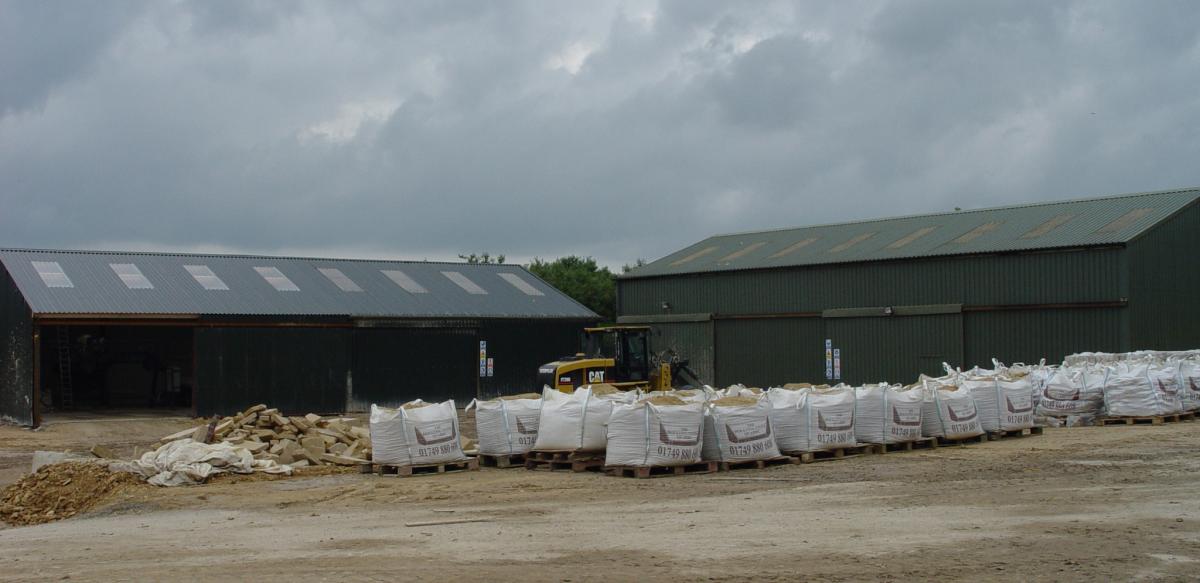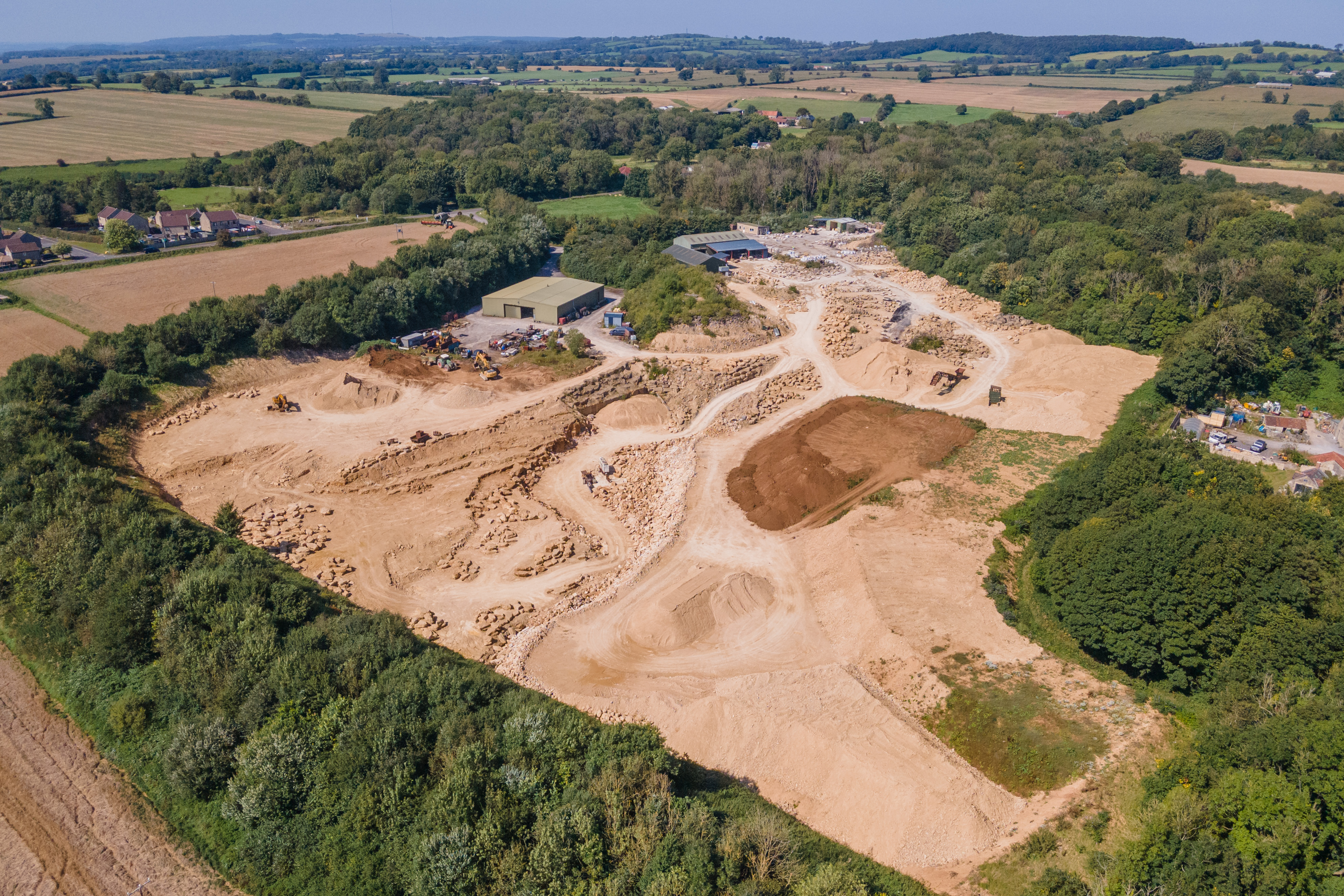Colin Keevil has put Doulting Quarry, which he says has 200,000 tonnes of reserves of Doulting limestone (not all consented), up for sale.
He is offering for sale the freehold of the 60-acre site, with existing consent to 2042 and the potential, currently not consented, for expansion north and south. He says he has lately discovered four more beds of a reddish colour stone with veining on the north side of the quarry lower down than those currently worked that would make attractive flooring. “It’s an exciting opportunity,” he says.
He expects offers to start from at least £4.5million from someone who can see the potential for the development of the opencast, low cost operation of Doulting Quarry.
Doulting stone, a creamy-brown oolitic limestone, was first used for building by the Romans. It has been used for the construction of prestigious buildings such as Wells and Guildford Cathedrals, and the tower added to Bury St Edmunds Cathedral this century. It is used today for many more quality new builds as well as conservation work, and the current order book includes 6,000m2 of walling for a major housing development in the area. Colin says he has a “very, very strong order book”.
He says he decided to offer the quarry for sale now because he has no family interested in taking it over and he is approaching his 65th birthday. “I work all the time and I want to do a bit less,” he says.
He is offering to continue to manage the quarry for some time for new owners to smooth the hand-over.
The decision to sell the quarry was also prompted by the death of Colin’s father and land his father had owned on the family farm, which Colin had worked, going out of his hands, prompting Colin’s move to Devon. Managing the quarry while living in Devon is involving a lot of travel that Colin is not enjoying.
The quarry was on the family farm. It had been worked by ARC (later Hanson Quarry Products) at a time in the 1980s and ’90s when some of the aggregates companies decided to move into dimensional stone. They all later changed their minds.
Colin Keevil, with a backer, took over Doulting Quarry in 1996 and became sole owner in 2002. He said at the time: “It makes good business sense to develop the quarry and maintain its contribution not only to the regional economy but also to the rich heritage of British building as a whole.”
He invested in the quarry, including adding processing sheds with modern, computer-controlled machinery so he could supply masonry, sawn six sides and scants to add value to the stone. He also carried on farming and found the two activities complemented each other.
Like many other British quarries, as well as supplying sawn six sides to other masonry companies and masonry to contractors, Doulting is supplying a lot of walling stone for housebuilding, as it has been for a good number of years, which allows smaller blocks of stone to be used rather than becoming waste.
Colin says a new owner could seek planning permission to produce aggregate for agricultural track surfaces to use waste that is currently returned to the quarry as backfill. It would then be possible to seek permission to use the quarry as an inert waste tip.
The site includes an area of woodland in an old, worked out part of the quarry and there are 17 acres of land on the edge of the quarry closest to the popular Somerset village of Doulting fronting the A36 that Colin says are “ripe for housing development”, although there is currently no planning permission for such development.
The final reason for the sale, says Colin, is that his daughter has moved to New Zealand and he has never yet had time to visit her there, which he would like to do.
Below. Bags of Doulting stone walling waiting to be delivered outside the quarry's saw and masonry sheds.


